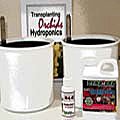Orchid Care - Watering
Incorrect watering is the #1 killer of orchids.
Watering orchids can be a mystery. And treating them like houseplants is a sure way to kill them. Why?
In nature, orchids cling to rocks and trees, with their roots completely exposed to the elements. They tolerate wind, rain, and long dry periods between showers.
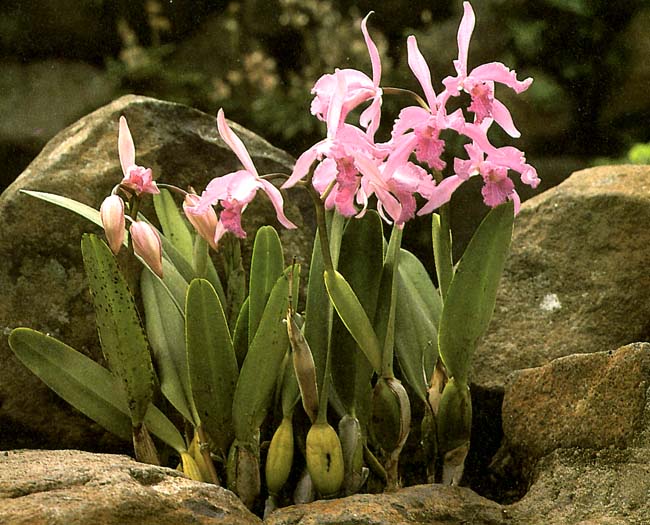 Orchids growing on rocks Orchids growing on rocks |
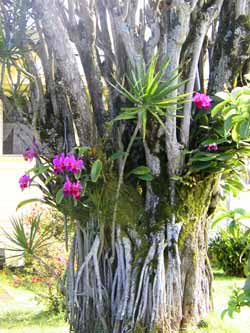 Orchids growing on a tree Orchids growing on a tree |
To copy nature, commercial nurseries use a mixtures of bark, moss, coconut husks, styrofoam chips and other materials to grow their plants.
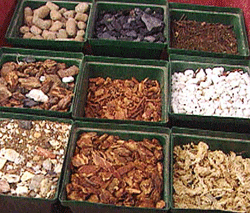 Typical potting materials for growing orchids
Typical potting materials for growing orchidsAll these potting materials make watering orchids a challenge. What holds water? What doesn't?
To make matters even more complicated, potting materials vary depending on where your orchid comes from (Hawaii, Florida, Taiwan, ???). Growers use whatever material is the cheapest and works best for them. That might be styrofoam and coconut husks if your orchid was grown in Florida, or sphagnum moss if it was grown in Taiwan.
So it's not unusual to see two identical orchids growing in completely different potting mixes - which makes watering the same plant completely different!
With all these different potting materials, it's no wonder watering orchids is a mystery - even experienced hobbyists have trouble getting it right.
Watering with Hydroponics
Understanding what your orchid is growing in is the first step to correct watering. For beginner growers that means trail and error - which stresses your plant.
Our hydroponic system changes everything by taking the guesswork out of watering.
All those mysterious potting materials are replaced with a single, easy to use growing media that works for all orchids. Called LECA, these man made clay pebbles create the perfect environment for growing orchids.
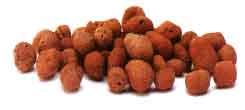 LECA pebbles
LECA pebblesLECA pebbles have excellent capillary properties that deliver the nutrient solution by "wicking" the moisture up to the plant gently and evenly.
Here's how our hydroponic system works ...
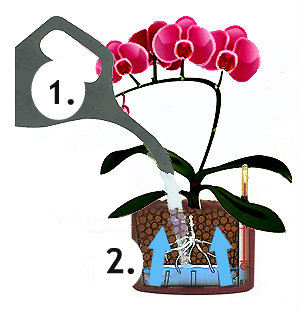
1. Pour water into pot at the top. Water passes through the pebbles to the bottom of the pot. A water gauge tells you how much is at the bttom.
 Water gauge reading empty Water gauge reading empty |
 Water gauge reading half full Water gauge reading half full |
2. Over time, the capillary properties of the LECA pebbles "wick" the moisture up to the plant's roots gently and evenly. As moisture move up to the roots, air circulates through the open spaces between the pebbles creating an ideal environment for healthy root growth.
This process works for all types of orchids. The wicking action of the LECA is consistent over time - no matter what type of plant is growing in it.
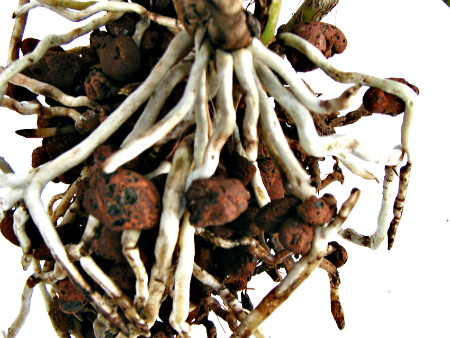 Cattleya roots growing in LECA
Cattleya roots growing in LECAFor orchids that like drier growing conditions (cattleya, dendrobium, etc,), simply wait longer between waterings. Establish a "dry period" (of a week or so) with no water in the system at all. This allows more time for air to circulate through the roots.
For plants that like more water, go ahead and rewater when the gauge reads empty - no dry period necessary.
For watering information on specific orchids go to:
Orchid Care with Hydroponics - the Plants
For more on orchid growing basics:


